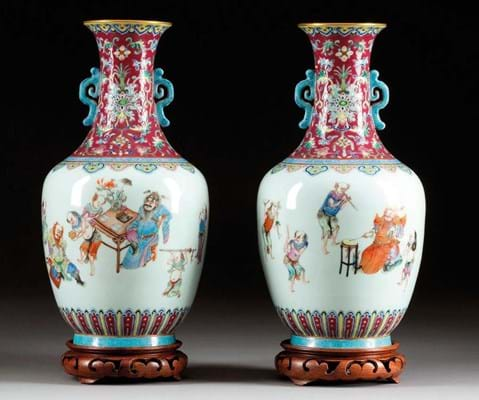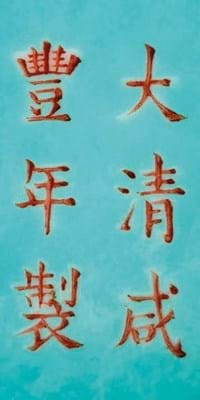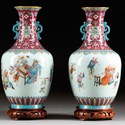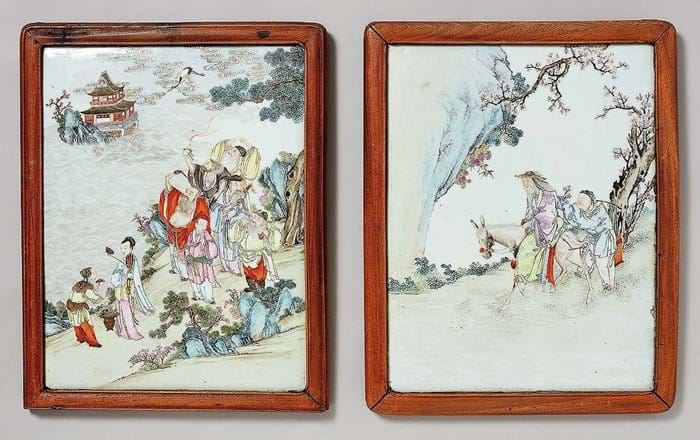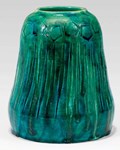The 12in (31cm) high, brightly painted vases were decorated with mythological scenes and bore the mark ‘Da-Qing Xianfeng nian zhi’, which would theoretically date them to the short reign of the Emperor Xianfeng, who acceded to the throne in 1850, but died only 11 years later.
However, later pieces in many cases, including a substantial number from the 20th century, also bore the mark of the ill-fated emperor.
Hargesheimer’s in-house experts dated the vases as “c.1900 or later” and set an appropriately low reserve of €600.
Chinese collectors were obviously of a different opinion and started a furious bidding match at the December 5 sale, which culminated in a hammer price of €310,000 (£281,820), with a phone bidder seeing off his numerous compatriots.
Brush with success
The Asian art sale at Lempertz (25% buyer’s premium) in Cologne on December 15-16 had its share of lots that made much more than predicted. Major interest emerged for seven ink and brush paintings with scenes and figures from the Peking Opera.
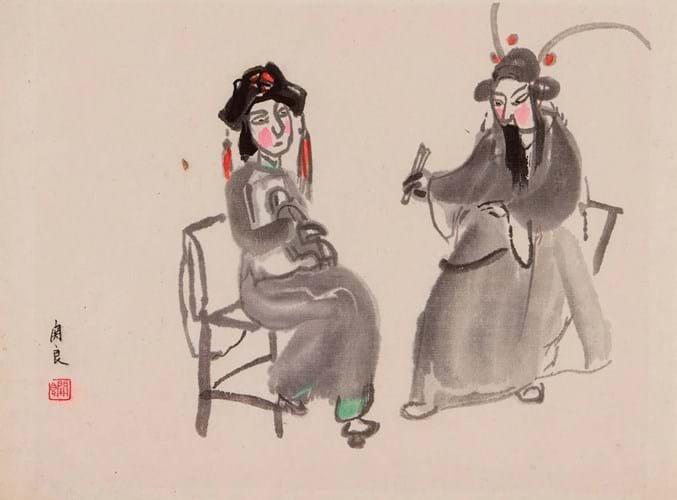
One of seven paintings of scenes from the Peking Opera by Guan Liang – €182,000 (£165,455) at Lempertz.
These were the speciality of the painter Guan Liang (1900-86), who was one of three Chinese artists who exhibited their works at the Berlin Arts Institute in East Berlin in 1957.
The sheets offered in Cologne were possibly connected to this exhibition. A year later, they were certainly in possession of the graphic artist Hans Joachim Walch in Leipzig, a friend of Guan Liang’s.
Lempertz saw only a moderate market potential for the illustrations and gave them a catalogue price of €4500-5000.
Eight phone bidders from around the world joined in and the Chinese collector who finally secured them had to invest €182,000 (£165,455).
A lot of competition also came for a pair of wooden-framed famille rose porcelain panels from the Qing Dynasty, painted with the Eight Immortals and a Scholar on a Donkey.
They too were fresh to the market, having last been sold at Lempertz in the late 1950s to a local collector.
They went from €2000 to €60,000 (£54,545). This time, a Chinese collector living in Germany won the day.
A 20in (50cm) high, 17th or 18th century bronze Buddha Shakyamuni lived up to its expectations with a top-estimate hammer price of €150,000 (£136,365), as did the large porcelain Guanyin figure previewed in ATG No 2469, which changed hands for €48,000 (£43,640).
Box stacks up demand
The front-runner at Nagel’s (29.5% buyer’s premium) Stuttgart sales of Asian art on December 8-9 and 11 was a small zitan wood stacking box richly inlaid with silver, mother-of-pearl and semi-precious stones.

Wanli period stacking box – €670,000 (£609,090) at Nagel.
It was attributed to Zhou Zhu, the most acclaimed lacquer craftsman of the Wanli Period and had been bought by a European diplomat in Peking in 1928.
The guide was €60,000-100,000, but the Taiwanese collector who eventually saw off his numerous competitors had to bid €670,000 (£609,090) for it.
Qing Dynasty furniture made of huanghuali wood was particularly in demand: a wine table was driven from €5000 to €95,000 (£86,365), a pair of yoke-back armchairs went from €3000 to €200,000 (£181,820), and another pair of a more refined design from €20,000 to €310,000 (£281,820).
The early 19th century zitan wood carved and lacquered cabinets previewed in ATG No 2469, trebled their estimate to sell for €185,000 (£168,180).


